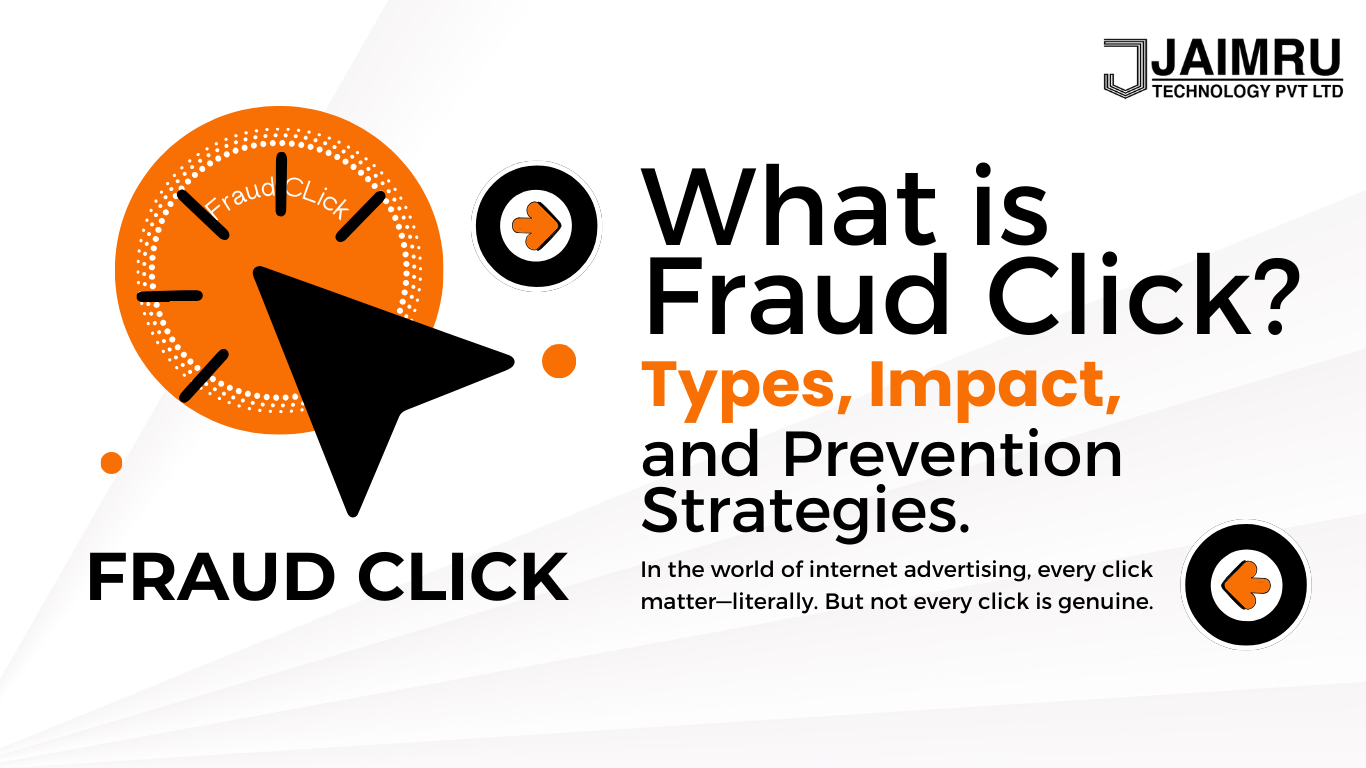
Posted On : 26-04-2025 12:26:00
In the world of internet advertising, every click matter—literally. But not every click is genuine. Enter click fraud, a misleading practice that can drain ad budgets, skew data, and harm businesses without them even realizing it.
In this post, we’ll analyze what click fraud is, delve into the types of click fraud to be aware of, explain how it affects your campaigns, and talk smart prevention tactics that will protect your ad spend.
Click fraud happens when someone—usually a competitor, bot, or fraudster—intentionally clicks on your ads with no interest in your product or service. The goal? To exhaust your ad budget, skew your performance metrics, or gain personal profit through ad networks.
It’s especially common in pay-per-click (PPC) advertising, where advertisers are charged every time their ad is clicked. Unfortunately, not all clicks are created equal.
1. Manual Click Fraud
- Performed by competitors or hired individuals who manually click on ads to sabotage campaigns.
- Common in industries with high competition and expensive keywords.
2. Bot Click Fraud
- Automated programs or bots simulate human clicks to inflate ad impressions or drive fake traffic.
- Often used by malicious actors or unethical publishers trying to boost revenue.
3. Click Farms
- A group of low-paid workers clicking on ads or engaging with websites to manipulate engagement metrics.
- These farms can mimic real behavior, making them hard to detect.
4. Publisher Click Fraud
- Occurs when a website owner repeatedly clicks on ads on their own site to generate more income from ad networks.
- Violates policies of platforms like Google AdSense.
5. Competitor Sabotage
- Competitors click on your ads to deplete your budget quickly, making your ads disappear and boosting their own visibility.
Click fraud doesn’t just waste money—it has deeper, long-term effects on your marketing efforts:
- Budget Drain: Your ad budget gets eaten up by non-legitimate clicks.
- Skewed Analytics: You may think a campaign is performing well (or poorly) when the data isn’t accurate.
- Lower ROI: Fewer real leads and conversions despite high traffic numbers.
- Wasted Resources: Marketing teams spend time analyzing false trends and adjusting strategies unnecessarily.
- Account Suspensions: Platforms may flag suspicious activity and pause your campaigns—even if you’re the victim.
Luckily, there are practical ways to detect and prevent click fraud before it causes serious damage:
1. Use Click Fraud Detection Tools
- Tools like ClickCease, PPC Protect, or CHEQ can monitor clicks in real-time and block suspicious IPs.
2. Set IP Exclusions in Ad Platforms
- Manually block IP addresses or ranges that repeatedly click without converting.
3. Leverage Geotargeting
- Focus your ads on specific regions and exclude areas where fraud is more likely to occur.
4. Monitor Campaign Metrics Closely
- Look out for spikes in click-through rates without conversions, high bounce rates, or unusual time-on-site data.
5. Use CAPTCHAs and Bot Filters
- Adding these on your landing pages can help filter out non-human traffic before it wastes your budget.
6. Limit Ad Display Frequency
- Use frequency capping to prevent your ads from being seen (and clicked) repeatedly by the same user or bot.
7. Educate Your Team
- Make sure everyone handling ads knows what click fraud looks like and how to respond.
Click fraud is a covert killer in the digital advertising world—but it doesn't have to be. You can combat it effectively—using the right tools, data analysis, and prevention strategies minimize the damage and make sure your ads are shown to actual people, with actual intent.
Don’t let fake clicks drain your budget. Stay alert, use smart technology, and keep optimizing for what matters most—genuine engagement and meaningful results.
Copyright 20-2025 Jaimru Technology Private Limited | All Rights Reserved.